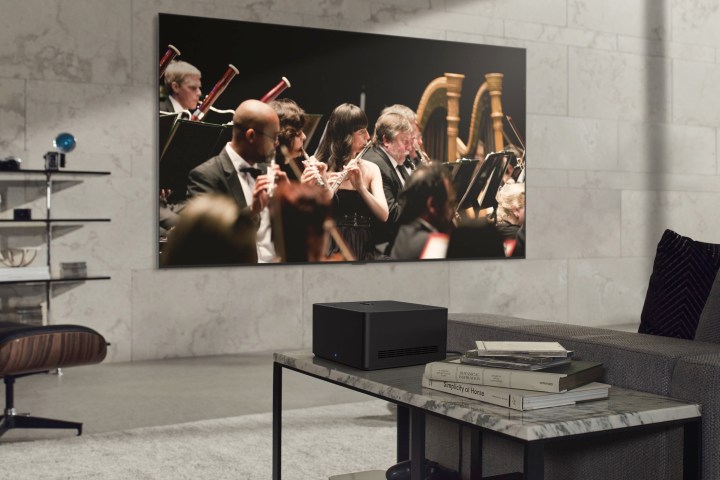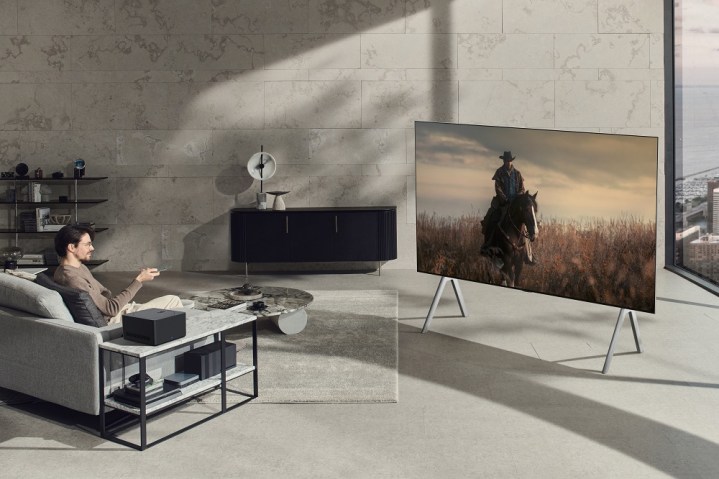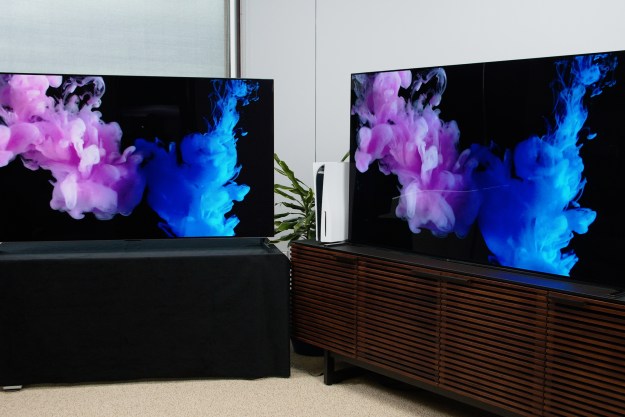
One of the coolest things we saw at CES 2023 — at least in terms of TV tech — was LG’s enormous 97-inch wireless OLED TV. The LG Signature OLED M requires only a power cable when it’s mounted to a wall. Everything else — the video, audio, and network connectivity is all beamed wirelessly to the screen from a big black cube that acts as the TV’s brain. This clever bit of TV kit now has a price and a global release: it’s coming to the U.K. in September for 28,000 British pounds (about $35,400).
It will be accompanied by two smaller versions based on LG’s OLED evo panels — an 83-inch model for 8,000 British pounds (about $10,000), and a 77-inch version for 6,000 British pounds (about $7,600). These wireless TVs are also expected to make their way to other parts of Europe and the U.S. later this year, according to LG’s press release, but no U.S.-specific pricing was announced.

The Signature OLED M vastly simplifies the work and complexity of installing a giant (or even not-so-giant) TV on your wall by eliminating the need to run HDMI, optical, or Ethernet cables inside your wall. Or, as LG has shown with the stand-mounted versions of the M-Series, it lets you position your TV in a variety of places in a room, again without needing to deal with any cables other than power.
It also means that you have greater freedom to place your accessory devices — like Blu-ray players, cable boxes, AV receivers, and streaming media players — almost anywhere you want.
These are all connected to the OLED M’s Zero Connect Box can be placed as far as 10 meters (about 32 feet) from the screen. The Zero Connect Box then takes the inputs and outputs from these gadgets and streams them over its own proprietary high-frequency wireless link that LG claims is up to three times the speed of the Wi-Fi 6E standard, and is capable of real-time video and audio transmission at 4K 120Hz. It also supports the transport of HDR formats like Dolby Vision and multichannel audio like Dolby Atmos.
There’s just one caveat to this wireless wonder: To maximize the distance between the Zero Connect Box and the OLED M’s screen, the box must be placed in a direction facing the screen, according to LG. We presume this means the Zero Connect Box needs a clear line-of-sight to the screen, but we won’t be able to test this until we get a Signature OLED M mounted in our new studio. When we do, we’ll tell you exactly what you can expect from this unique OLED TV.
Editors' Recommendations
- Report: Sonos Ace headphones will get wired and wireless lossless audio
- You Asked: Sony surround, FlexConnect vs. Sony HT-A9, LG G4 vs. Samsung S95D
- Hulu with Live TV: plans, price, channels, bundles and more
- 2024 LG TVs first look: G4 OLED upgrades and a pleasant webOS surprise
- Samsung unveils pricing and preorder details for its 2024 OLED TVs



